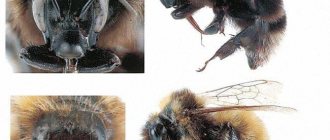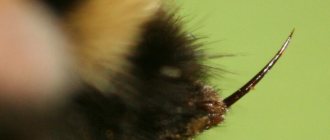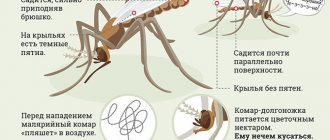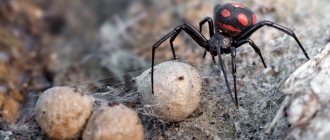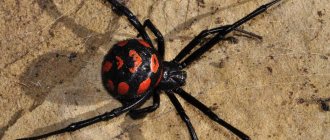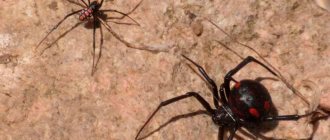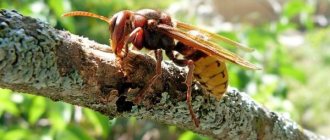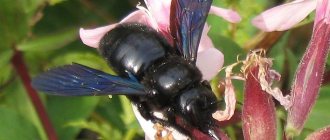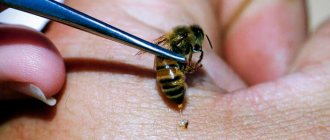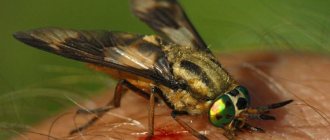Spiders appear in almost every apartment from time to time. People's attitude towards these living beings is ambiguous: some do not like them and try to eliminate them, others, blaming folk superstitions, leave them alone. In order not to torment yourself with doubts about what to do with new neighbors, you need to know whether they are dangerous or, on the contrary, beneficial and how to prevent their appearance in the apartment.
What species live in the apartment
Spiders belong to the order of arthropods; they are all obligate predators, that is, they cannot do without animal food; small insects are their tasty morsel. They live on all continents except Antarctica.
Only a few species, out of thousands known, can coexist with people in apartments and houses. It is not so easy to notice their presence; they choose the darkest corners for their habitats and hide when their owners approach. The presence and type of spiders that have settled in a home can be determined by the web and the appearance of the individual.
The most common types of house spiders:
- Black and gray spider. They are small in size - body length 14-18 mm. They settle in warm and dry places in the house. The female never leaves her habitat. These types of arthropods weave structured webs.
- Centipede. It is also called a haymaker or a windowcutter - due to its predilection for settling on the windowsill. Their peculiarity is a small body - up to 10 mm and long legs; the total size of an individual can reach several centimeters. After eating the victim, the spider completes the web, so it often looks chaotic.
- Tramp. This representative of arthropods does not stay in a person’s home for a long time, for which he received a telling name. Its peculiarity is its method of catching prey, which is unusual for spiders - the tramp attacks insects by jumping and immobilizes them with poison. For this reason, he does not spin webs. Individuals of this species have an elongated body and long legs, with a maximum total size of no more than 5 cm.
Flies, cockroaches, two-tailed bugs, bedbugs - that's all that spiders feed on in the apartment. Having waited for the victim to become entangled in the web, the spiders inject poison and digestive juice into it; when the insect dies, the predator sucks out the insides from it.
These creatures do not form populations, so no matter how long house spiders live in an apartment, their numbers will not increase significantly, and if there is a lack of food, they reproduce only once, at the end of their life cycle. The lifespan of each individual depends on the species to which it belongs; as a rule, it is several months.
Danger of poison
Eight-legged invertebrates produce three main types of substances:
- cobwebs for catching prey, weaving cocoons and nests;
- toxins to kill prey and feed on;
- sex pheromones.
Note. The spiders' venom not only kills, but also turns the insects' internal organs into liquid, which is then sucked out by the spiders from their remaining chitinous coverings.
The larger the size of the individual, the more dangerous it is. This also depends on the toxicity of the poison, its quantity and the size of the chelicerae. The last predators to bite through the skin. However, those specimens that settle in houses cannot damage the epidermis of an adult healthy person so much that the poison enters the blood.
In some cases, this can still happen, but the strength of the toxins and their quantity will clearly not be enough for the victim to develop poisoning of the body. It is extremely rare that the symptoms are pronounced, which is typical for people who are allergic to the biological components of spider venom.
Below are the clinical manifestations characteristic of this pathology:
- Over time, a small spot (white or pink) with red borders and puncture marks forms on the skin;
- the moment of the bite itself is usually not noticeable;
- development of slight hyperemia and swelling;
- In the form of a local reaction, there may be a burning sensation, itching, pain is quite rare.
House spiders are unable to bite through the skin of an adult
In extremely rare cases, an allergy to toxin components develops. In this case, the victim must be urgently examined by a doctor, so you need to call an ambulance or take the patient to the clinic.
The danger signs are listed below:
- at the wound site the formation of severe edema and hyperemia, which spreads to most of the limb;
- weakness and dizziness;
- nausea, possibly vomiting;
- shortness of breath, suffocation;
- drop in blood pressure;
- increased salivation, sweating;
- feeling of anxiety, panic.
The note. House spiders never attack themselves. A bite occurs during an attack on an insect or during accidental contact with it, for example, during sleep. There will be only one mark on the skin, because after that the predators try to retreat as quickly as possible and flee. It is important to understand that attacking a person is uncharacteristic for them.
Reasons for appearing in the apartment
Why do spiders appear in the apartment? If they are regular guests in a home, it means they are attracted to the conditions, the most important of which is the availability of food.
These creatures will not stay long where there are no small insects. Therefore, the best way to prevent spiders in an apartment is to make sure that there are no midges, cockroaches, or ants.
There are other reasons for the invasion of spiders in the home:
- Favorable temperature. In autumn, spiders from the street are looking for a warmer place to live.
- Humidity level. Spiders, depending on their species, are attracted to both dry rooms and places with high humidity, for example, a basement or a bathroom.
- Unsanitary conditions. Where cleaning is rarely done, insects most likely live, serving as food for arthropods; spiders receive enough food and actively reproduce.
Spiders do not start on their own; they enter a home from the street in various ways; if the room is suitable for living, they will settle for a long time; if there is no food, they will leave to look for a new place.
Where do spiders appear in the apartment:
- small cracks in the floor;
- open windows;
- Street clothes;
- pieces of furniture (that have been outside for a long time);
- wild or garden flowers (tree branches, berries) brought into the house.
If spiders appear in a large number in an apartment, then the reason is not accidental entry from the street, but active reproduction already inside the home; in such a situation, it is necessary to take measures to eliminate unpleasant neighbors. To do this, you need to know what spiders are afraid of. Chemical insect repellents, sticky tapes, and ultrasonic devices can cope with them. They are also repelled by many smells: paint, wallpaper paste, mint, orange.
Features of behavior
The name "hermit" is explained by the solitary lifestyle. The animal is active at night, preferring solitary hunting. The hermit's web does not have an orderly pattern, it is extremely sticky to the touch, and is made of chaotically located white threads.
In wild nature
The hermit spider lives in warm climates, but is able to survive frosts down to 35 degrees, hiding under a stone or log. Arthropods live in forest areas and open spaces, preferring dry and secluded places.
In a private house
The domestic recluse spider can be found in secluded corners - in the attic, in the basement, under the bathroom, in crevices and inaccessible places. House spiders also live in utility rooms - garages, sheds, barns.
Arthropods often penetrate bedding, nest in closet compartments, inside beds and nightstands.
Dangerous or not
One small black spider brought in from the street will not cause harm to living quarters and people. If the residents are loyal to this creature, then they may well coexist with it. It’s another matter if there are too many spiders and they actively weave webs, giving the room an unkempt appearance - in this case you need to take measures, for example, collect all arthropods and the fruits of their activity with a vacuum cleaner, identify and destroy egg laying, poison insects.
Absolutely all of these creatures are poisonous, so many are interested in whether house spiders bite. In fact, they rarely attack prey as large as humans, but it is possible. The dose of poison is not significant, but the bite site must be treated with an antiseptic.
Spiders can be truly dangerous for people suffering from arachnophobia (fear of arachnids). During an attack, when contemplating an arthropod, they may experience serious symptoms, including suffocation.
Whether or not to destroy living beings in radical ways depends on what kind of spiders live in apartments and in what quantity. If they are all different and are found on every corner, then it no longer matters whether house spiders are dangerous to humans or not - you need to get rid of them. Primarily through food deprivation.
A little about folk signs
There are many folk signs associated with these insects. Since ancient times, people have monitored house spiders and, based on their behavior, predicted important events that awaited the family.
- if the spider crawls down, expect problems. It is much better if it creeps up - this is a profit;
- seeing a spider in the morning promises bad news; in the evening, on the contrary, it promises good luck;
- A large number of cobwebs under the bed for unmarried people promises new love acquaintances. A married couple needs to be more attentive to each other’s desires;
- if he crawls over money, expect unexpected financial income;
- The luckiest spider is white. Black is considered a bad omen and brings bad luck.
Not everyone now believes in omens, but there is one that even scientists agree on - you can’t kill spiders! And not because it will bring failure into your life. They are simply an integral part of the ecosystem. Small domestic arthropods are not dangerous to humans. At the same time, they catch harmful and bothersome insects such as mosquitoes and flies.
Advice! If you still want to get rid of the spider, you can simply take it outside.
Who are spiders?
A spider is an arthropod insect belonging to the class of arachnids. Modern science has more than 40,000 varieties. Almost all are predators and feed on a variety of fauna (from midges to small birds).
The territory, which previously included all countries of the USSR, is inhabited by more than 3,000 species of arthropods. How can you tell which spiders bite and which don't?
Spiders weave webs to catch their prey. Some types of spider webs are used to produce silk. When food falls into the trap, the arthropod hunter releases poison into the body. Almost all species are poisonous, but differ in the strength and nature of the poisonous substance, as well as the power of the bite. Small individuals cannot bite through human skin and are included in the “non-dangerous” group, while others easily release toxic substances into the body. How a spider bites depends on the type and size of the insect. Almost all patients report sharp pain like a pin prick.
Scientists divide spider poisonous substances into two types:
The first has an effect on blood cells and the epidermis, causing necrosis in various locations. The second type is the most common, since the main goal of the predator is to immobilize the prey, causing dysfunction of the central nervous system.
What does it eat?
A representative of the described species is capable of going without food and water for a long time. The spider's prey is insects, including their larvae. But hermits do not disdain their own relatives and small vertebrates. Unlike most other species, hermits do not resort to capturing victims using webs.
flies
Spiders lie in wait for their hunting targets, moving significantly away from the nest. Killing is carried out by injecting a toxin from special glands located on the cephalothorax.
The hunter does not resort to preserving the victim with a web, but immediately begins to process the prey, tearing the flesh with his jaws and injecting gastric juice.
Beetles
When hunting beetles, spiders expect the deadly effect of poison. After death, the victims begin to eat, turning the corpse into a comfortable position in the process of eating.
Insect larvae
The easiest prey for hermits due to their low mobility and lack of resistance.
The body's reaction to a spider bite
Local reactions are expressed by external symptoms. After a bite, a typical lesion is characterized by fang marks (leaving 1-2 separate entrances). Within a few minutes, local inflammation occurs, resulting in a bright red spot followed by induration. Sometimes this may be accompanied by the formation of new red plaques around. Localized swelling usually lasts 7-10 days.
In some cases, a more severe reaction called necrotizing local reactions can occur due to bites from certain species. In such cases, a bubble occurs, followed by the formation of an ulcer with a crater. Wound healing takes several weeks to form a scar.
Systemic reactions are internal inflammatory processes. Sometimes during bites, venom components can be introduced into the body in sufficient quantities to damage several systems. When this happens, most of the venom passes through the circulating lymph. Thus, nonspecific generalized systemic inflammation may occur, leading to symptoms such as:
- fever;
- muscle pain;
- fatigue;
- enlarged nodes.
Some types of arthropod predators cause blood clotting disorders.
Other systemic effects are specific to venoms produced by specific species, for example: the bite of the brown recluse spider (Loxosceles reclusa) can cause severe red blood cell disorder. The notorious black widow spider (Latrodectus sp) can cause a syndrome characterized by severe muscle spasms, nausea and vomiting, rarely fatal.
Besides specific syndromes, the most dangerous is an allergic reaction either due to a direct bite or contact with spider hair. This happens in tarantulas. Symptoms can range from mild to anaphylactic reactions. The latter can be life-threatening and is considered a medical emergency.
Varieties
There are three main species of Loxosceles reclusa, as this species of arthropod sounds in Latin.
Brown
The most common variety. They originally lived in Latin America, from where they spread throughout the world since the 70s of the last century. They adapted to the conditions of existence next to humans.
Brown
Chilean subspecies. Less poisonous, common in Chile and Hawaii.
Mediterranean hermit spiders, distinguished by their red-brown or yellowish color, live in the southern latitudes of Europe and Russia. The degree of danger of the poison of this species of arthropod needs additional study.
What do spider bites look like?
Spider bites are different and have their own specific appearance. What to do if you are bitten by a spider at home, on the street or in the forest:
- Determine the type of individual.
- Treat the bite site.
- Go to the hospital.
Each arthropod has its own characteristic bite. Let's look at what a spider bite actually looks like below.
Cross
The bite of the cross spider is almost harmless, except for the feeling of discomfort in the affected area. The poison used by the predator is low in concentration and is not capable of paralyzing or killing a person. A spider bite looks like a white spot edged with a red ring.
The first symptoms are:
Specific examples of life expectancy
Today, several dozen species of spiders, which are of the greatest interest in keeping, have become widespread as pets. Let's talk in more detail about exactly how long arachnids live in captivity.
- Tarantulas. These are real record holders for life expectancy. Under natural conditions, tarantulas can live more than 15 years. If such a giant is kept at home, it can live 20-30 years.
- Tarantulas in natural conditions live up to 10-12 years. Whereas if kept at home, such a pet, provided it is properly fed and provided with appropriate conditions, will live 15-20 years.
- Goliath. These are large arachnids that are extremely interesting to keep. They usually live 8-9 years. Moreover, females usually live to a ripe old age, and males die by the age of 5-6 years.
- Cross. The average lifespan of these arthropods usually does not exceed 5-6 months. Males die immediately after mating, while females usually live 4-6 months, they manage to create a cocoon, after which they die. During their short life, crosses can reproduce only one generation.
- Peacock. This is an extremely interesting species of small arachnids that are brightly colored. The lifespan of this type of spider is usually no more than 9 months.
Keeping tarantulas, tarantulas and other arthropods at home is not particularly difficult. Using simple equipment in a glass container with spiders, you can maintain optimal humidity and temperature, and you can purchase food for such pets at most large pet stores. All this will be the key to trouble-free maintenance of arthropods, which can live with you for as long as possible without getting sick or causing trouble.
How is a bite treated?
What to do if you get a spider bite? Treatment is carried out symptomatically. Below are different treatment options depending on the types of reactions.
Local reactions
First aid for a spider bite is to clean the injury with soap and water, apply dry ice to reduce swelling, and monitor the patient for a period of time for signs of systemic reactions. Immobilizing the bite site (for example, splinting the affected limb) slows the lymphatic spread of the venom. In addition, a tetanus shot may be given. Necrotic lesions are treated with surgical removal of dead tissue, painkillers, sterile dressings, and rest.
Systemic reactions
Includes treatment of target organ damage:
- maintaining adequate fluid status;
- blood transfusion with extensive breakdown of blood cells;
- pain relief;
- injections of calcium gluconate to relieve intoxication.
Allergic reactions
Treatment, as for any other type I hypersensitivity reaction, includes:
- antihistamines;
- steroids;
- adrenaline for life-threatening reactions such as angioedema and anaphylaxis.
Muscle spasms
Treated with an antivenom that targets specific spider bites. Side effects from this therapy include fever, joint pain, muscle pain, swollen lymph nodes, and skin rashes.
In nature, spiders are very common; there are many thousands of species. They prefer to live in warm climates. Often these arthropods move into a person’s home as an uninvited guest or pet. What types of these creatures can most often be found in the house?
Who needs long legs?
The harvestman has long legs, which he can easily handle. Nature has thought out a unique principle for controlling these limbs. The legs are bent with the help of the muscle that pulls the tendon (muscular-mechanical action). They unbend from the pressure of the hemolymph, which accumulates inside (hydraulic action). Such a well-oiled mechanism is incredibly economical: it avoids the need for many small muscles. A haymaker can easily wrap its paw around any blade of grass or small pebble. The walking pigtail easily overcomes obstacles and can move even in hot or cool weather, carrying its body high above the surface.
The mechanism of movement of the haymaker interested specialists in the field of bionics (applied science that studies the use in technology of the principles of functioning of living forms). Kosinozhki give ideas to writers and artists, they are developed by specialists who are working on creating... walking vehicles for studying other planets.
Such an automatic machine is thought of as a walking device, which has a number of advantages over a wheeled or tracked automatic machine, especially in terms of orientation and overcoming obstacles. The equipment intended for research and movement is concentrated in a sealed capsule rising on several long, articulated legs. There are sensors at the ends of the legs and in the joints that send information about the contact of the leg with the substrate and its relative positions, according to which further coordinated movements are programmed at each moment. A walking automaton will be able to navigate by touch, bypass and overcome obstacles. ... The technical principles of operation are the same even in detail. For example, it is believed that to set the legs in motion, the most appropriate combination of mechanical and hydraulic principles is observed in the paw of a harvestman: flexion due to a cord passing through the segments to the end of the leg, and extension by the pressure of the fluid filling the leg (“Life of Animals” , volume III).
At the first danger, the haymaker easily loses his limbs. The wound heals instantly, so there is no loss of hemolymph. The severed leg continues to twitch for some time (up to half an hour). This occurs due to the voluntary contraction of special muscles. Lizards act in a similar way when they give their tails to the enemy. Autotomy (this is what the “voluntary” loss of body parts is called) often saves an animal from death. Haymakers losing part of their legs is a common occurrence. Their legs, unfortunately, do not recover.
The longest is usually the second pair of legs. The male common harvester has up to 54 mm. These legs read information about the state of the ground, stone or other support. Red dots on the legs or body are the larvae of ticks that have attached themselves to the braids.
Spiders in the house: is it dangerous?
As a rule, arthropods are absolutely safe for people, but their very appearance often causes disgust. Although they help clean the apartment from cockroaches, bedbugs and other pests. At the same time, spiders reproduce slowly, so you don’t have to worry that in a matter of days your home will turn into their colony.
Important! If there are spiders in the house, it means that something is attracting them. Most often these are insects that form food for arthropods: flies, mosquitoes, cockroaches. If you take them out, the spiders will disappear. .
Most arthropods can be observed in spring and summer, since these creatures love warm and dry climates.
Almost all types of house spiders are predators, that is, they use other living organisms as food, primarily insects. In order to catch a victim, they weave their web and lurk nearby . Once the unfortunate insect is trapped and entangled, the spider injects its venom, causing the death of the prey, which it devours outright or stores as a reserve.
Reproduction
Tegenaria domestica leads a solitary lifestyle and gathers in pairs only during the mating period. The male looks for the female’s web, carefully approaches, and pulls the threads. The female, at the sight of the “suitor,” either rushes to attack or sits motionless in the center of the funnel. The second option means that the lady is ready to accept the gentleman. After mating, the couple remains together for some time. Then the most important thing for the male is to leave in a timely manner, otherwise he will simply be devoured.
After a few days, the female begins to weave a cocoon from the web, lays eggs there, and hangs it from the funnel, where she herself lives. The cubs develop in about 20 days, during which time the tegenaria protects them. About 50 spiders are born. They stay together for about 2 weeks, their mother feeds them, then they scatter in different directions.
Types of house spiders
The following arthropods can most often be found in apartments and private houses
How can you recognize them ? The distinctive features of a black spider are:
- Miniature body size, average length about 1.5 cm.
- The web has the shape of a tube.
The window has a body length of no more than 1 cm, an oval or round abdomen, and 8 long legs. It prefers to weave webs in dark corners or under window sills. Black spiders often have yellowish patterns on their bodies, which are densely covered with hairs . There are several pairs of eyes, but arthropods focus primarily on other senses.
Body size and structure
The body size of an animal depends on its gender. An adult female grows up to twelve millimeters in length, a male – up to eight. Taking into account the leg span, the dimensions increase to twenty millimeters.
A characteristic feature of the species is a brown mark resembling a violin. It appears in mature individuals, but is sometimes noted in young spiders. The hermit has six eyes, unlike other species of arthropods, which have eight organs of vision.
At rest, the animal’s paws, devoid of spines, are thin and long, evenly spaced on the sides. When danger arises, the front legs are pulled under the body, the side legs are raised and the hind legs are straightened.
The paws and lower body are evenly colored, without spots or stripes. On the joint bends of the legs the shade of pigmentation is lighter compared to the main one. The color of the animal’s body is determined by its habitat and environmental conditions, varying from brown and dark brown to completely black.
The hermit's belly is covered with fine hair, resembling wool when examined under a microscope.
Are house spiders dangerous?
As a rule, the species found in our houses and apartments are absolutely harmless, since they do not emit poison. Black tramps living in regions with hot climates can pose a certain danger More precisely, not the spiders themselves, but the secretion of the oral gland they secrete. Accidentally brought from the southern regions to the middle zone, such creatures also pose a danger.
An accidental bite from a house spider is harmless to humans, since the venom of these arthropods is dangerous only for insects - their victims. But still, for the purpose of prevention, doctors recommend treating the bite site with hydrogen peroxide or alcohol.
Classification and habitat
There are three types of hermits:
- brown;
- black;
- brown.
The arthropod is distributed on three continents, including:
- Africa;
- North and South America.
Europe is home to a Mediterranean variety of spiders that are harmless to humans. The remaining species are found infrequently, entering with random parcels or on vehicles. The hermit spider in Russia is common in the middle and southern latitudes; to the north they live in human houses and utility rooms.
Brownies are different
Disputes about the origins of brownies continue today. There are quite a lot of versions. Some seem more logical, others are scary. It is impossible to understand which of them are the most truthful.
Everyone chooses for themselves what to believe. People simply settle on what fits into their worldview and accept it as the truth.
Types of brownies:
- The ancient Slavs believed that the brownie had nothing to do with the human world. This is a creature from the world of spirits and magical creatures that has settled next to people. For what purpose? Mutually beneficial coexistence. The spirit receives a roof over its head and food, and in return helps with the housework and protects the inhabitants of the house or apartment.
- According to another version, the invisible owner of the house is a dead man. Sounds creepy, yes! But you shouldn’t be afraid of him - he’s also a good brownie. The Higher Powers left the soul of the deceased on Earth to cleanse karma. Perhaps during his lifetime he was unable to devote time to his family, he did not know how to care and love, so now he is learning all this after death.
- In addition to the good guy, there is also an evil brownie. It’s not entirely correct to call him a brownie, but that’s the way it is. What is he? An ethereal entity seething with negative energy. Perhaps this is a random guest. Or your family itself created it with a bad environment in the house. It is difficult to get rid of it, but it is possible.
An animal can also become a home protector. Actually, any, but usually it's a cat or a dog. Why not other animals (rats, hamsters, parrots), no one knows.
How do they look
A good brownie can take on different forms. Some of them are so frightening that they evoke thoughts of exorcism.
But don’t rush to run after the exorcist! Listen to your feelings. Maybe you were scared out of surprise? Try to understand whether you feel slight fear or panic? If the fear quickly evaporates, there is no need to sound the alarm. It’s just that your housewife likes to joke and therefore appears to the inhabitants of the apartment in a creepy role.
What do brownies look like:
- On balls of wool. Often at first glance they resemble small black kittens. And sometimes they are large, very furry, with glowing eyes. "Cats" can be black or gray.
- To the shadow. This is an unusual shadow. She has no owner behind whose back she must walk. This means that the shadow can be on any surface in the house - even on the wall, even on the ceiling. Or it will even fly through the air in front of your nose, scaring the hell out of you.
- For one of the deceased relatives. Such a meeting can cost gray hairs, because we all read horror films about ghosts in childhood and know that we can’t expect good from them. Brownies usually appear as ghosts when they want to warn of danger.
The neighbors themselves choose in what form they will appear before us. Their appearance depends on many factors, including the atmosphere in the house and the mood of the spirit itself. Because of this, it can be confused with an evil entity - a restless soul or a poltergeist.
Therefore, it is better not to judge by appearance, but to try to feel the energy. Understand whether good or bad energy comes from a being. And only then act.
What to do with the amulet if it is damaged
During long-term use, the amulet may lose its attractive appearance: the color of the threads will become faded, and cracks will appear on the clay figurine. This means that over a long period of service, the brownie successfully fulfilled its protective function. Further use of the amulet makes no sense, since its magical power has dried up. You need to get rid of such a talisman.
It becomes obvious that the brownie is a bright spirit who will happily serve a person. Of course, sometimes brownies play pranks, but there is never any malicious intent in their pranks
By their actions they draw a person’s attention to the fact that home and family are the greatest values, therefore the apartment must be kept clean and tidy, and family members must live in peace and harmony
Birds
If you want your home to be filled with sonorous chirping, get a bird. They are easy to keep, you can leave them alone for a long time, and they do not smell. The only disadvantages include the litter that spills out of the cage and the noise created by some species. If you want to sleep off on your day off, it is better to cover the cage with thick fabric: in the dark the birds behave quietly. Let's look at the most popular birds kept at home.
- Parrots are one of the brightest and most beautiful birds. Most often, budgies of green or blue colors are kept in apartments. But there are many other interesting species. For example, Grays, cockatoos, cockatiels, lovebirds. A parrot can be taught to speak; many people buy them for this very purpose. But in order for your pet to speak, daily training will be required.
- Canaries are nimble and agile birds. They can be trained to be handled. If you want to listen to bird singing, it is better to buy a male, female canaries do not sing.
- Finches are bright and cheerful birds. Some species have very beautiful plumage. The most common are zebra finches - ash-colored birds with expressive red cheeks.
The cage should not be placed near a window; a draft may cause your feathered pet to catch a cold. Birds are quite fragile creatures and are easily injured - this should be remembered when you pick them up.
You can also keep wild bird species at home. The starling, bullfinch, siskin and nightingale can live well in captivity. They get used to the owner and communicate with him with pleasure. Some people have ducks; this bird does not sit in a cage, but moves freely throughout the apartment. She can be tamed and is easy to train. And to prevent the bird from shitting around the house, they put a diaper on it.
